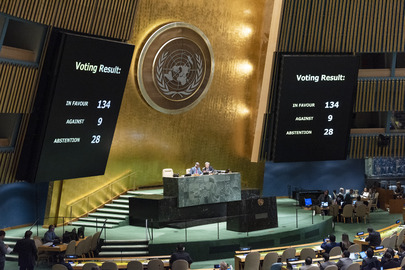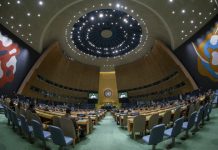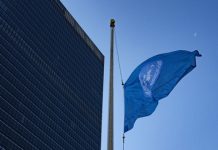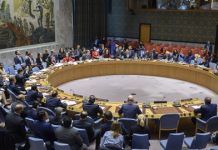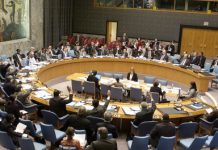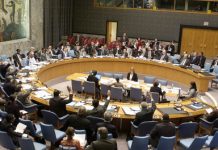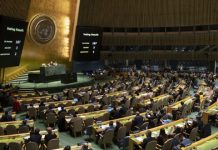Every dollar invested in girls’ education yields an average return of $2.80 – translating into billions in additional GDP. Similarly, each dollar spent on water and sanitation saves $4.30 in healthcare costs.
Simple math, not miracles
These aren’t miracles – they’re measurable outcomes. Maths doesn’t recognize gender or infrastructure; it simply reflects the truth in numbers. And those numbers make a compelling case: helping countries with the least resources benefits everyone, including those with the most.
Even a single dollar, strategically invested, can make a profound difference.
For example, allocating just $1 per person annually to combat non-communicable diseases could prevent nearly seven million deaths by 2030. Likewise, every dollar spent on disaster risk reduction can save up to $15 in recovery costs.
Yet despite such compelling evidence, development aid is often misunderstood – seen by some as mere charity, and by others as a vehicle for profiteering.
Equity, not charity
The latest UN Development Programme report on Afghan women entrepreneurs challenges the skeptics.
It highlights that these women are not seeking charity – they’re asking for a fair chance to succeed. Earning their own income gives them a measure of independence, which in turn strengthens the communities they live in.
Against all odds, they are generating income, creating jobs, and building fuller, more enriching lives.
Expanding access to public and private financing, guaranteeing loans, offering preferential terms in international markets, and reinforcing support networks can fuel business growth and foster a more prosperous future – whether in Afghanistan or Ecuador, or anywhere in between.
FFD4 faces strong headwinds
These examples – from education and health to entrepreneurship and disaster resilience – paint a clear, data-driven narrative: smart investments in development pay dividends for everyone.
That message should be front and center at the upcoming Fourth UN Conference on Financing for Development which will be held in the Spanish city of Sevilla, from 30 June to 3 July. But the summit, known by its clunky acronym FFD4, faces stiff headwinds.
Even as countries negotiating at UN Headquarters in New York agreed a week ago on a sweeping outcome document – set to be adopted at the close of the conference and intended to guide the future of global development aid – some nations are pulling back.
Notably, the United States has announced it will not send a delegation to Sevilla at all.
And even though there are some notable exceptions, including Spain, which has increased its development financing budget allocations by 12 per cent, the uncertain landscape ahead has led UN Secretary-General Antono Guterres to lament that “global collaboration is being actively questioned.”
This questioning is reflected in the $4 trillion annual deficit in development financing, as well as the abandonment of earlier commitments and delivery of aid by donors at what the Secretary-General has called “a historic speed and scale.”
Moreover, the Sustainable Development Goals, signed by all world leaders just 10 years ago, are a long way off track.
What is at stake in Seville?
Success in Sevilla “will require other countries to fill the global leadership vacuum and demonstrate credible commitment to multilateral cooperation, which is essential for our survival,” states Jayati Ghosh, professor of economics at the University of Massachusetts, Amherst.
Meaningful steps forward must include deep reforms of the international financial system. As it stands, it fails to meet the needs of developing countries while steadfastly protecting the interests of wealthier nations.
Consider this: developing countries face interest rates at least twice as high as those paid by developed nations. And today, the average rates charged by private creditors to these countries have reached their highest levels in 15 years.
What aid gives, debt takes away
Developing countries spent a record $1.4 trillion on external debt service in 2023, the highest in 20 years.
Meanwhile, in 2024, more than 1.1 billion people live in developing countries where external debt servicing accounts for more than 20 per cent of government revenue, and nearly 2.2 billion live in developing countries where the percentage is higher than 10 per cent.
Interest payment on this debt hinders development by preventing investment in health infrastructure and education services, to cite just two examples.
Debt restructuring is therefore essential, because much of the hope for development is lost in the give and take of aid and debt.
Promoting investment in what works
Eradicating hunger, advancing gender equality, protecting the environment, confronting climate change, and saving our oceans are not radical ideas.
Despite claims from some highly ideological viewpoints that the Sustainable Development Goals represent an extremist agenda, they are, in fact, a shared baseline – an urgent set of priorities that humanity demands and that the leaders of 193 countries committed to in 2015.
Despite the noise made by those who oppose development aid and multilateralism, they are a minority, says Spain’s Secretary of State for International Cooperation.
Ana Granados Galindo sees Seville as “a beacon of global solidarity.”
Meanwhile, as the world gears up for FFD4, mathematics, statistics, and Afghan women continue to work their common sense ‘development magic’.
Source of original article: United Nations (news.un.org). Photo credit: UN. The content of this article does not necessarily reflect the views or opinion of Global Diaspora News (www.globaldiasporanews.com).
To submit your press release: (https://www.globaldiasporanews.com/pr).
To advertise on Global Diaspora News: (www.globaldiasporanews.com/ads).
Sign up to Global Diaspora News newsletter (https://www.globaldiasporanews.com/newsletter/) to start receiving updates and opportunities directly in your email inbox for free.


